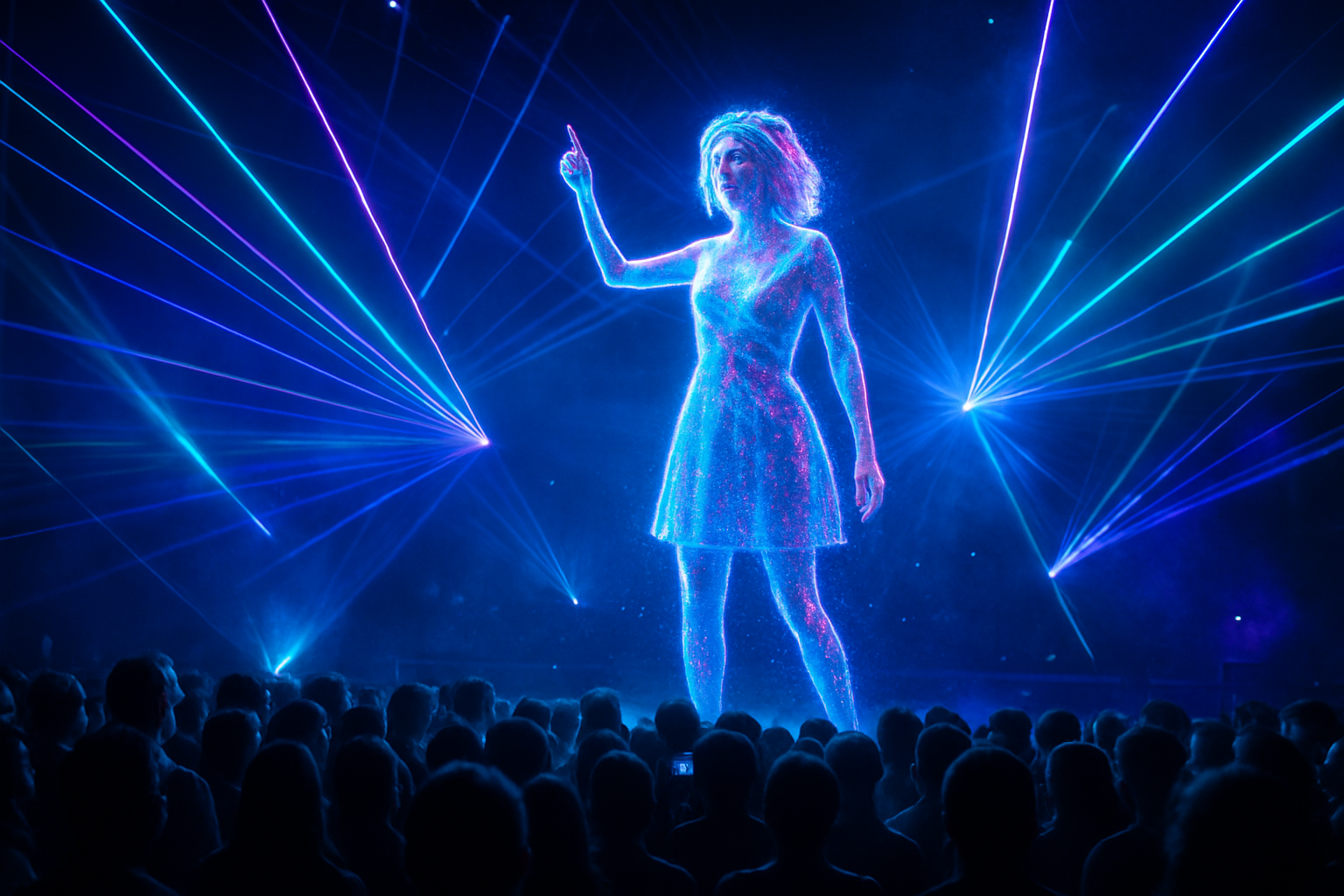Holographic Concerts: The Future of Live Music
In an era where technology continues to reshape our entertainment landscape, holographic concerts have emerged as a groundbreaking fusion of music and visual spectacle. This innovative approach to live performances is captivating audiences worldwide, blurring the lines between reality and digital illusion. As holographic technology advances, it's not just bringing deceased artists back to the stage, but also opening up new creative possibilities for living performers and redefining the concert experience.

The first major holographic concert that captured global attention was the 2012 Coachella performance featuring a digital recreation of Tupac Shakur. This groundbreaking moment sparked a wave of interest in holographic performances, leading to rapid advancements in the technology.
Technological Marvels Behind the Illusion
At the heart of holographic concerts lies a complex interplay of cutting-edge technologies. High-definition projectors, motion capture systems, and advanced computer graphics work in harmony to create convincing 3D images that appear to occupy physical space.
Recent developments in laser technology and spatial light modulators have significantly enhanced the quality and realism of holographic projections. These advancements allow for more detailed and vibrant images, capable of interacting with real-world elements on stage.
Beyond Posthumous Performances
While holographic concerts initially gained fame for resurrecting departed music icons, the technology’s applications have expanded far beyond posthumous performances. Living artists are now exploring holographic concerts as a means to extend their reach and create immersive, multi-dimensional shows.
Some performers use holographic technology to create multiple versions of themselves on stage, enabling complex choreographies and visual effects previously impossible in live settings. Others leverage the technology to collaborate with artists from different parts of the world, breaking geographical barriers in real-time.
The Economic and Environmental Impact
Holographic concerts are not just a technological marvel; they’re reshaping the economics of live music. These performances offer a way to stage shows in multiple locations simultaneously, potentially increasing revenue while reducing travel costs and carbon footprints associated with traditional tours.
Moreover, venues can host a diverse range of performances without the logistical challenges of accommodating large touring crews and equipment. This flexibility opens up new possibilities for smaller venues and could democratize access to high-profile concerts in less-travelled locations.
Ethical Considerations and Artistic Integrity
As holographic concerts become more prevalent, they raise important ethical questions, particularly regarding the use of deceased artists’ likenesses. Issues of consent, artistic integrity, and the potential exploitation of an artist’s legacy are at the forefront of discussions in the music industry and among fans.
There’s also debate about the authenticity of the concert experience. Can a holographic performance truly capture the energy and spontaneity of a live show? As the technology evolves, creators are working to address these concerns, striving to create experiences that honor the spirit of live performance while embracing new technological possibilities.
The Future Soundscape
Looking ahead, the potential for holographic concerts seems boundless. We may soon see hybrid shows where holographic and live performers share the stage, creating unprecedented collaborative experiences. Virtual reality integration could allow audiences to interact with holographic performers in ways never before possible.
As 5G networks become more widespread, we might witness the rise of decentralized concerts, where holographic performers appear in multiple locations simultaneously, with audiences able to interact across venues in real-time.
The evolution of holographic concerts represents a fascinating convergence of art, technology, and human creativity. As this medium continues to develop, it promises to redefine our understanding of live music, offering new avenues for artistic expression and audience engagement. While challenges remain, the holographic concert scene is poised to play a significant role in shaping the future of live entertainment.




